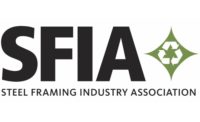Manitou Group announced the signing of a letter of intent with the Nordic steelmaker SSAB for deliveries of fossil-free steel. Deliveries are set to start in 2026 and will ramp up as SSAB’s fossil-free steel production capacity increases. The agreement meets the ambitions of the two companies to significantly reduce their direct and indirect carbon emissions.
As Manitou Group’s supplier, SSAB is a highly specialized global steel company that develops high-strength steels and provides services for better performance and sustainability. Both companies are now furthering their collaboration by adding future deliveries of SSAB Fossil-free and SSAB Zero steel to the mix.
Both steel types are produced with virtually zero fossil carbon emissions (less than 0.05 kilograms of CO2 emissions per kilogram of steel in scopes 1 and 2), which will allow Manitou Group to bring to market a new generation of sustainable products with radically reduced CO2 footprints, including, for example, telehandler, aerial work platform or forklift ranges.
“We’re excited about adding Manitou Group as a fossil-free partner to SSAB,” said Olavi Huhtala, executive VP and head of SSAB Europe. “Our goal is to revolutionize the way steel is produced and pave the way for a greener future. Thanks to customers like Manitou Group who share our ambition of reducing carbon emissions, we’re able to create early markets for sustainable steel.”
“We work every day closely with our suppliers to reduce our indirect carbon emissions and offer more sustainable products to our customers,” added Maurizio Achilli, VP of sourcing at Manitou Group. “This collaboration with SSAB is very important for us, as steel represents the main raw material for our products.”
SSAB aims to revolutionize the entire steelmaking process and be the first to offer emission-free steel to the market at a commercial scale in 2026. As a reminder, Manitou Group aims to reduce its direct and indirect carbon emissions (scopes 1 and 2) by 46.3 percent and its CO2 emissions for every hour of use of the machines (scope 3) by 33.7 percent by 2030.



Report Abusive Comment